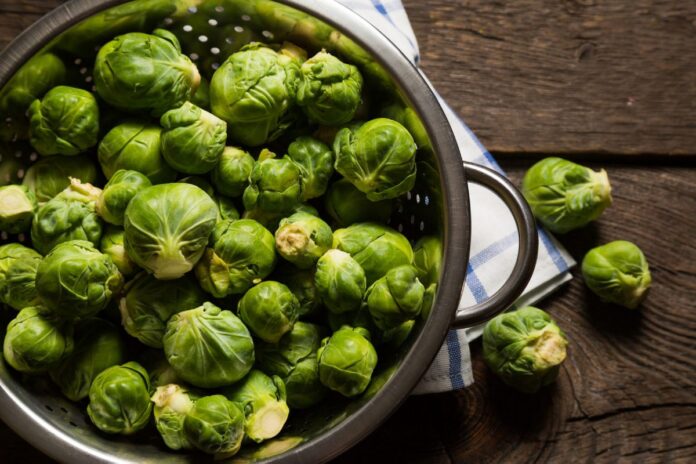Nutrition: Each sprout contains 10 calories; that adds up to 38 calories per cup. Brussels sprouts contain three times the vitamin C of oranges; 1 cup of sprouts offers 124 percent of the adult recommended daily allowance. Sprouts also are a good source for vitamins A and D, potassium, dietary fiber, folic acid and several antioxidants. Brussels sprouts have about 4 grams of protein per cup, the same as cup of milk.
Selection: Look for the brightest green color, uniform shape and similar size. (Like size will help them cook evenly.) Sprouts should feel firm and heavy for their size. Avoid sprouts that look puffy or have black spots or yellow leaves.
Sprouts also may be purchased “on the stalk,” but the same guidelines apply. Look at the 20 to 40 sprouts attached to that 2- to 3-foot stem and choose a stalk with bright green, firm sprouts. Once home, “pluck” the sprouts as needed.
Storage: Keep unwashed sprouts in a paper or plastic bag, stored in the crisper drawer of the refrigerator, for up to one week. Store “on the stalk” sprouts still attached to their stem and remove just before preparation.
Preparation: Rinse sprouts with cold water. Trim stem ends without cutting the base of leaves or the little head will come apart during cooking. Cut a shallow “X” in the base of each sprout; that helps the stems to cook faster. Large sprouts may be cut lengthwise in halves or quarters.
Brussels sprouts may be steamed, microwaved, sauteed, boiled, roasted or grilled. Cook until just tender. Test by inserting the tip of a sharp knife into the stem end.
Steaming is the easiest cooking method and retains this vegetable’s many nutrients. Place sprouts (either whole or halved) in a single layer in a steamer basket over 1 inch of boiling water; cover. Steam for 10 to 20 minutes, testing with a sharp knife for tenderness.
Belgian connection: In the late 1500s, this cabbage cousin was cultivated near Brussels. This vegetable remained a Belgian delicacy until after World War I, when its popularity spread throughout Western Europe. Very popular in Great Britain, Brussels sprouts have been referred to as England’s “national vegetable.”





